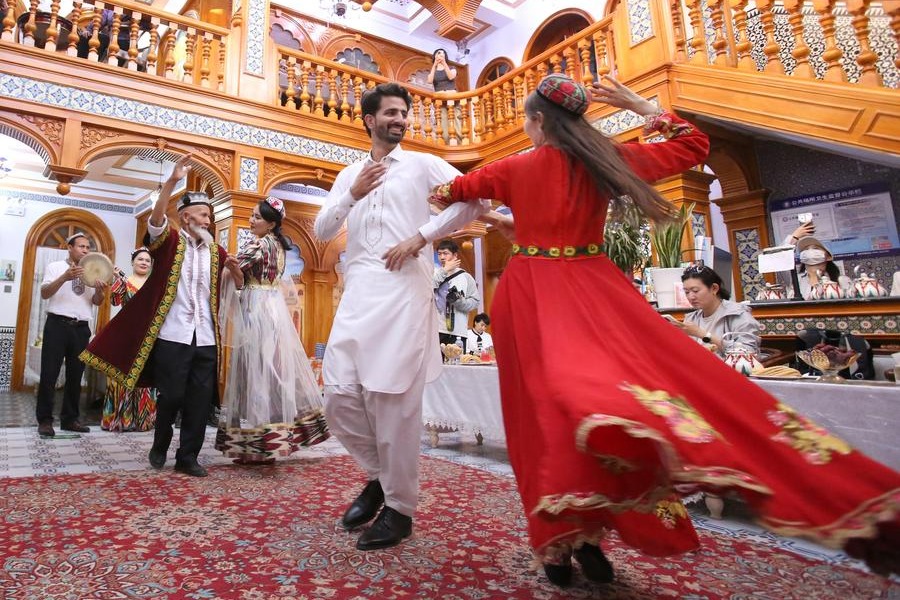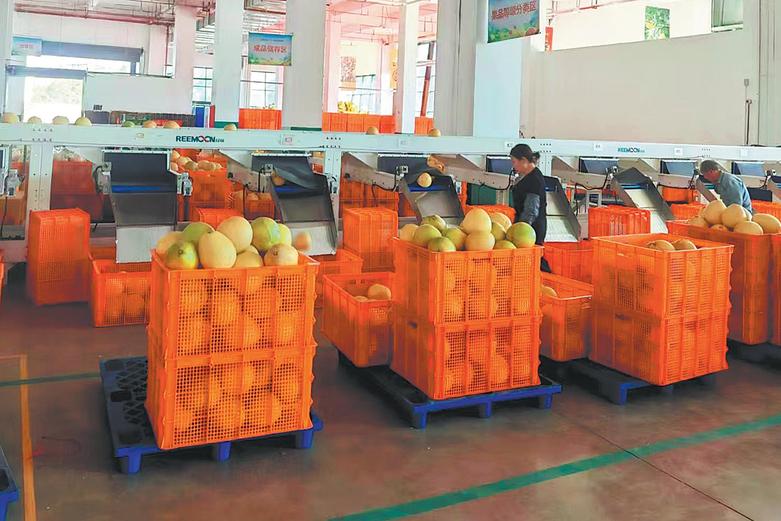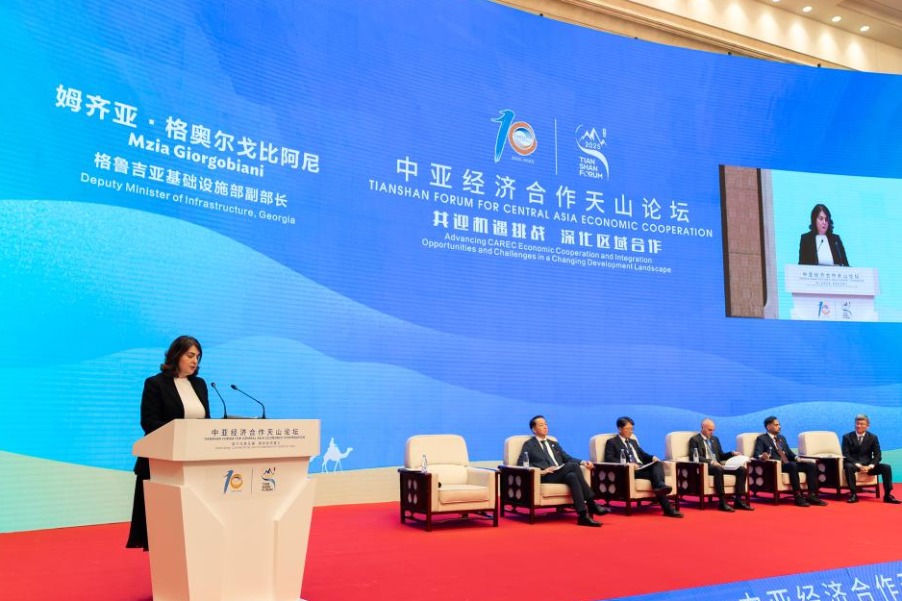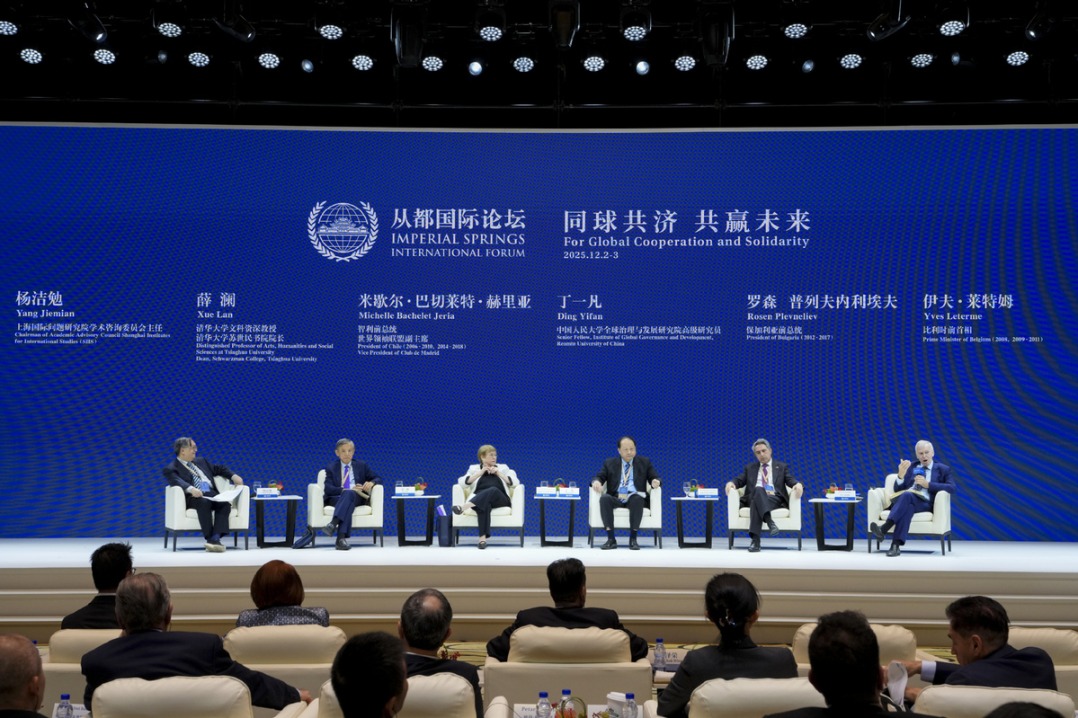Fashion designer finds inspiration in Shenzhen

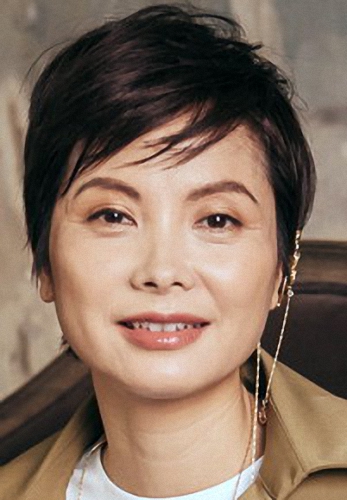
This year marks the 40th anniversary of the establishment of the Shenzhen Special Economic Zone and the 12th since Shenzhen, in Guangdong province, became the first Chinese city appointed as a UNESCO City of Design.
With favorable policies and cultural inclusiveness, the city has become a hotbed for innovations and creativity, appealing to talent who want to make something happen in the city.
Zhao Huizhou, a Chinese fashion designer who has many design awards under her belt, is among them.
Zhao said she chose to start her design career from scratch in Shenzhen after graduating from the Hubei Institute of Fine Arts in 1996.
"I was attracted by the city's inclusiveness and vigor, and the fast-paced lifestyle here has also pushed me to continue enriching myself and making progress," Zhao said.
In 1997, she founded the Shenzhen-based company Eachway Fashion Group to explore the city's fledging fashion sector.
"From 1997 to 2008, it was a process of accumulation for my brand. I engaged myself in bringing my designs to be accepted by the market," she explained.
After 2009, Zhao started to seek further education to improve her business. She began attending the Executive Master Business Administration program at the China Europe International Business School and learning about fashion management and finance.
In 2014, she jumped at the chance to be one of the core designers of the outfits for the leaders' spouses who attended the 22nd APEC Economic Leaders' Meeting in Beijing.
"The event provided Chinese designers an international stage to display their creative credentials," said Zhao, adding that since then, she has gained enough confidence to explore "the international expressions of traditional Chinese elements".
The next year, the couturier debuted her solo runway show at Milan Fashion Week to test the waters in foreign markets.
The good feedback from the fashion week encouraged her to keep bringing her creations to international stages in the following years.
"What I experienced at Milan Fashion Week each year has boosted my ego in boldly using Chinese elements, such as embroidery, batik and tie-dyeing cloth. In recent years, I also tried to use bright red, dark green and other colors popular in traditional Chinese textiles," she said.
Zhao used to seek inspirations in remote villages in Guizhou and Yunnan provinces where such traditional cloth-processing techniques such as batik and tie-dyeing are well-preserved. Sometimes, the totems of ethnic groups also motivate her to design patterns with a primitive touch.
The more visits she paid to these places, the more urgent she felt it was to help the local people revive the aforementioned cultural heritage.
In 2016, supported by Shenzhen Women and Children's Development Foundation, she initiated the Hui Fund to help low-income craftspeople in mountainous areas live a better life and carry on traditional arts.
Workshops and training sessions have been held for fashion designers from big cities and native embroiderers so they can communicate with each other.
Zhao said that fashion designers can guide embroiderers who used to produce low-value replicas to make creative and artistic works.
As she delved into the traditional culture, she became eager to trace the roots of Chinese-styled fashion and develop a comprehensive understanding of the evolution of fashion in the country.
She established a museum where the royal costumes of different dynasties, traditional attire and accessories of various ethnic groups, spinning wheels and other objects related to the development of Chinese-styled fashion are displayed.
"By observing the collection in the museum, we managed to conduct systematic research on the fashion trend of a certain period. For instance, we are studying the garments that featured silhouettes through the long course of Chinese history," Zhao said.
She added that she hopes more people will understand the origin and development of fashion at the museum and fashion designers will also be inspired by some of the exhibits.
She pointed out that the improvement of product quality is significant in today's fashion market.
"Today's customers are not just buying a piece of clothing, they are choosing a kind of lifestyle. In the future, we plan to create environmentally friendly garments that feature cultural elements and are comfortable to wear," she said.
In this milestone year, the designer is ready to continue the ascent of her career and make efforts with other fashion practitioners to bring Shenzhen, a global design powerhouse, to a new stage of development.
- China, France agree to launch new round of cooperation on panda protection
- Cracking down on cross-border crooks
- Xi, Macron witness signing of multiple cooperation documents
- Xi says China, EU should be partners
- Xi calls on China, France to expand cooperation in multiple areas
- Courts step up efforts to curb private sector corruption

















